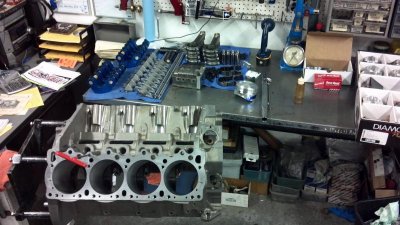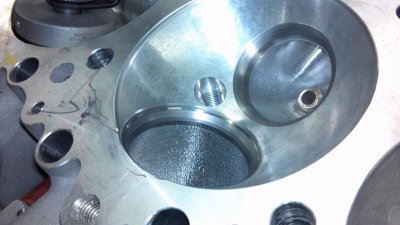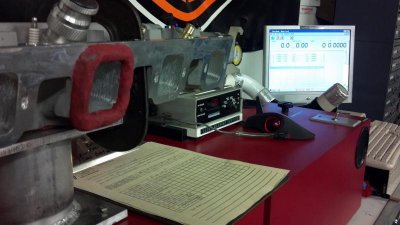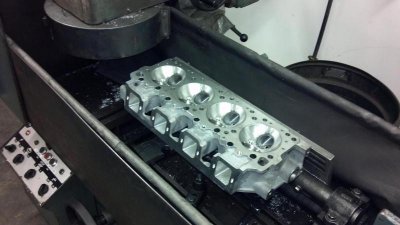Your friend is right. I've seen problems with some roller rockers without needle bearings or bushings. Most of the time, I machine a groove in the 4th cam journal. This makes it oil 100%. A .050" wide by .020" deep groove does the job.
Doing it with simple lines from the deck/head feed galley to the lifter circuit works nice too. I use hard brake line and fittings.
So you just drill and tap the top end feed galley and turn the cam bearing up side down to block the top end oiling holes? Then drill a new cam journal oiling hole from the main passage. On the other end you just eyeball a location (and hope you drill into the main lifter galley) then just connect with steel brake line?
On some aftermarket heads, like Indy, they use external oil lines to the rear two galley holes below the deck, but above the bell housing.
That would probably be where the oil pressure sender sits. A simple tee with a line to each head, however, you will need to drill into the rear rocker pedestal bolt hole and I guess plug the passage at the stock location.
I built a B1 head engine using an Indy aluminum Hemi block once. (Before the wedge came out). The block conversion was a total pita. I used a jumper line between the two oil passengers in the valley. I machined the heads, under the rocker stands for NOS jets as restrictors.
Ford FE engines are the easiest. You just drop a Holley main jet right in the oil passage on on rocker pedestal under the shaft. If mopars were that easy...



















